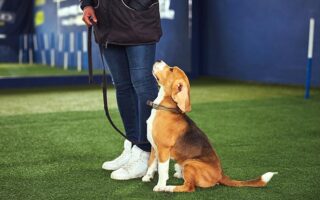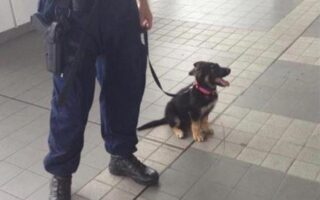Title: The Art of Dog Potty Training: A Comprehensive Guide for New Pet Owners
Introduction:
Welcoming a dog into your home is a joyous occasion, as these loyal companions bring boundless love and energy to our lives. However, along with wagging tails and playful barks comes the responsibility of ensuring a harmonious living environment—particularly when it comes to potty training. Whether you have a spirited puppy or a mature rescue, learning the ins and outs of dog potty training is essential for both your peace of mind and your furry friend’s well-being. In this article, we’ll explore effective techniques, common challenges, and expert tips to transform the journey of potty training into a rewarding experience for you and your four-legged buddy. Say goodbye to accidents and hello to a well-trained canine companion as we dive into the essentials of dog potty training.
Table of Contents
- Understanding Your Dogs Potty Signals
- Essential Tools and Techniques for Successful Training
- Establishing a Consistent Routine and Rewards System
- Common Challenges and Effective Solutions in Potty Training
- Q&A
- In Summary
Understanding Your Dogs Potty Signals
Recognizing your dog’s potty signals is essential for successful training. Dogs communicate their needs in various ways, and by paying close attention, you can anticipate when they need to go outside. Look for signs such as:
- Circling or sniffing: Your dog may circle around or sniff the ground, as if searching for the right spot.
- Restlessness: If your dog appears anxious, pacing, or constantly moving, it could be a sign that they need to relieve themselves.
- Whining or barking: Vocalizations can sometimes indicate urgency—especially if it’s a behavior that’s out of the ordinary.
Each dog is unique, and observing their specific signals will greatly enhance your training success. Keeping a consistent potty schedule can also help manage their needs. Consider establishing a routine by tracking your dog’s potty breaks in a simple table:
| Time | Activity | Observations |
|---|---|---|
| 7:00 AM | Potty Break | Sniffing around |
| 12:00 PM | Potty Break | Whining at the door |
| 6:00 PM | Potty Break | Restless behavior |
By noting these patterns, you’ll be better equipped to recognize when your furry friend is signaling their need to go outside.
Essential Tools and Techniques for Successful Training
To make dog potty training a breeze, equipping yourself with the right tools is crucial. Start by investing in high-quality potty pads. These absorbent pads create a designated space for your dog and help manage accidents during the training process. In addition, having a reliable leash is essential for outdoor training. It allows you to guide your dog to the appropriate potty area while keeping them secure. Another handy tool is a pet-safe cleaner for any mishaps; this will help erase lingering odors that may entice your pup to go in the same spot again.
Understanding your dog’s behavior is key to successful potty training. Utilize positive reinforcement techniques such as treats, praise, and playtime to reward your furry friend for going in the right spot. Establish a consistent potty schedule to help your dog develop a routine. You can also create a progress tracking chart to note your dog’s achievements. This visual representation adds an element of fun to the training process and keeps you motivated. Here’s a simple table to illustrate how you can track progress:
| Day | Successful Outs | Accidents |
|---|---|---|
| 1 | 3 | 1 |
| 2 | 5 | 0 |
| 3 | 4 | 1 |
Establishing a Consistent Routine and Rewards System
Creating a stable environment for your dog is paramount during potty training. Begin by establishing a clear and consistent routine that involves regular potty breaks. Dogs thrive on predictability, so aim to take your pup outside at similar times each day. This not only helps them understand when it’s time to do their business but also reinforces good habits. Consider these key times for bathroom breaks:
- After meals: Dogs typically need to eliminate shortly after eating.
- Upon waking: Taking them out first thing stimulates their bladder after rest.
- After playtime: Physical activity often leads to increased need to relieve themselves.
- Before bed: A final opportunity to go can prevent nighttime accidents.
Incorporating a rewards system can significantly boost your pup’s motivation. Whenever your dog successfully uses the designated potty area, shower them with praise or offer a small treat to reinforce positive behavior. Consistent incentives create associations between desired actions and pleasant outcomes. Here’s a simple reward chart to track progress:
| Day | Successes | Reward |
|---|---|---|
| Monday | 3 | Chew toy |
| Tuesday | 4 | Extra playtime |
| Wednesday | 2 | Favorite treat |
| Thursday | 5 | Walk in the park |
Common Challenges and Effective Solutions in Potty Training
Potty training your dog can come with its fair share of hurdles that may test your patience and resolve. One common challenge is inconsistency in your dog’s potty habits. Dogs thrive on routine, so erratic schedules can lead to accidents indoors. To combat this, establish a strict timetable for bathroom breaks, especially after meals, playtime, or naps. Utilize positive reinforcement like treats and praise to encourage outdoor bathroom habits, helping your dog associate the need to go with a desirable outcome.
Another frequent issue is misunderstanding cues. Dogs often exhibit signals indicating they need to go out, but owners may overlook these signs. Learning your dog’s unique behavior patterns—like pacing, whining, or sniffing—can be essential. Creating a clear communication system can assist. Some pet owners find success using visual aids, such as a designated bell that the dog can ring to signal the need for a potty break. This not only keeps your living space clean but also strengthens the bond of communication between you and your furry companion.
Q&A
Q&A on Dog Potty Training: Pawsitive Steps to Success
Q1: What age should I start potty training my puppy?
A1: It’s generally recommended to start potty training your puppy as soon as you bring them home, which is often around 8 weeks old. Puppies are like sponges, soaking up information and routines, and starting early helps establish good habits.
Q2: How often should I take my puppy outside?
A2: A good rule of thumb is to take your puppy outside every hour, as well as shortly after meals, playtime, and naps. Their small bladders mean they need frequent bathroom breaks, so consistency is key!
Q3: What’s the best spot for potty training?
A3: Choose a designated potty area outside where you’d like your puppy to do their business. This helps them associate that spot with potty time. Keep the area consistent, and over time, they’ll learn to head there when nature calls.
Q4: What if my puppy has an accident indoors?
A4: Accidents happen! Stay calm and avoid scolding your puppy, as this can create fear and confusion. Instead, clean the area thoroughly with an enzymatic cleaner to eliminate odors that might attract them to go there again. Remember, patience is part of the process!
Q5: How do I reward my puppy for going outside?
A5: Positive reinforcement is crucial! After your puppy successfully goes potty outside, reward them with praise, pets, or a small treat. This creates a connection in their mind between the behavior and the reward, encouraging them to repeat it.
Q6: Should I use potty pads indoors?
A6: Potty pads can be helpful for city-dwelling pups or during inclement weather, but they might cause confusion if you intend to transition to outdoor potty use. If you choose to use them, gradually move them closer to the door until the pads are outside, helping your puppy acclimate to the new routine.
Q7: How long does potty training take?
A7: The timeline can vary widely based on the individual dog and consistency in training. While some pups may grasp the concept in a few weeks, others might take several months. Every dog learns at their own pace, so adjust your expectations accordingly!
Q8: What if my adult dog still has potty training issues?
A8: If your adult dog is having accidents indoors, consider consulting a veterinarian to rule out any medical issues. Once health is confirmed, revisit the basic potty training principles, ensuring they have a consistent routine, access to outside, and positive reinforcement.
Q9: Can I use a crate for potty training?
A9: Yes! Crate training can be a powerful tool in potty training. Dogs naturally avoid soiling their sleeping area, so a appropriately-sized crate can help encourage them to hold it until they’re let outside.
Q10: Any final tips for successful potty training?
A10: Keep your expectations realistic, be consistent in your routine, and shower your puppy with love and patience. And remember, every small step counts in the journey to successful potty training—celebrate the little victories along the way!
In Summary
In the journey of dog potty training, patience and consistency are your greatest allies. While the path may have its share of ups and downs, the reward of a well-trained dog is immeasurable. By understanding your furry friend’s needs and behaviors, you can create a positive and nurturing environment that fosters successful training. Remember, each little success is a step closer to achieving your goal. Embrace the process, celebrate the milestones, and forge a deeper bond with your canine companion as you navigate this essential aspect of pet ownership. With time, love, and dedication, you’ll turn those early challenges into lasting habits, ensuring a harmonious home for you and your four-legged friend. Happy training!



